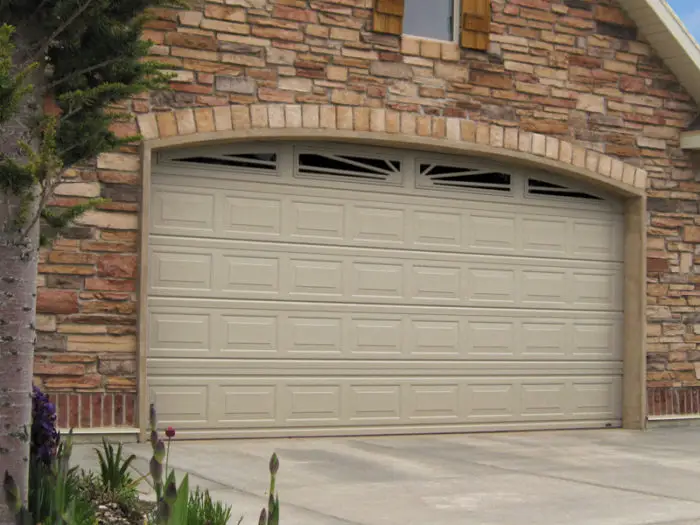When I began building a smart home a year ago, I was a novice in this field. I often wondered if I were doing things the right way and that made me wish, I had some sort of guide or checklist to help me out of this dilemma.
Now, after one year of successfully converting my house into a smart haven, I think I have gained enough experience and knowledge to help those who are looking to embark on this path.
So, what are the 11 things to consider before building a smart home?
1. What devices do you wish to automate
2. Do you need a good Wi-Fi router?
3. What is your daily routine
4. Are your devices compatible with each other and your voice-assistant
5. What is IFTTT and Why You Should Care
6. Talk to your landlord
7. Did you buy all the components needed to make a smart gadget work?
8. Can you really Do-It-Yourself?
9. Is it possible to integrate dumb appliance with smart gadget
10. Is a smart home more safe and secure?
11. Is building a smart home worth the money?
Below, I have explained each point mentioned above in detail to help you understand everything you probably need to know about smart home automation solution.
1. What Devices Do You Wish To Automate
Building a smart home does not mean you need to replace each and everything in your home with a smart device. That’s not the idea. Start with a proper planning and preparation. List the devices you wish to automate and that can really bring a difference in your life.
Some of the devices you can automate are home lighting, heating/ cooling system, home theater, blinds, coffee maker, multi-room music, TVs, window treatments, and a security system. I would suggest that you start slowly with a few important devices that you want to automate and then add up to the umbrella.
I have seen many people get overly excited and buy a lot of products that ultimately sit in the basement forever. Take it slow and contain your excitement to get everything at once.
Paris was not built in a day! Ever heard of the adage? So, buy one or two products at a time, learn about the features and get used to them.
2. Do You Need A Good Wi-Fi Router
 The smart devices heavily rely on your Wi-Fi to stay connected and even communicate with each other. You need a relatively good Wi-Fi network to be able to use the various smart devices. From your smart door and security system to smoke alarms and TV, they all eye for a larger piece of the Wi-Fi cake.
The smart devices heavily rely on your Wi-Fi to stay connected and even communicate with each other. You need a relatively good Wi-Fi network to be able to use the various smart devices. From your smart door and security system to smoke alarms and TV, they all eye for a larger piece of the Wi-Fi cake.
The average residential Wi-Fi routers available in the market are not designed for smart homes, hence they have a weaker connection, smaller range, and lower data rates. To have multiple devices talking to Alexa or Google assistant, and communicating with each other, you need a good router.
Getting a good router is not only important to ensure the connection stays strong, but also to prevent security threats from hackers. Smart home systems are new and exciting not only to you but to the hackers as well. A good router can keep you safe from unwanted security threats.
3. What Is Your Daily Routine?
Do not buy a smart device just for the sake of buying or bragging in front of your friends. The smart gadgets don’t come cheap so make sure they can actually bring about a difference in your daily routine by simplifying things and saving time.
Make a list of your daily activities – waking up early for a morning walk, making coffee, opening the shades, turning off the lights, turning on the radio, etc. Then look for smart devices that you can set up to automate those activities.
Do you want the lights to turn on and blinds to close at sunset, even while you are at the office?
Do you want the house temperature to be at a certain temperature when you get back home?
Or, maybe you want the smart cooker to prepare dinner for you. Buying smart devices that suit your lifestyle can give you good value for money.
4. Are Your Devices Compatible With Each Other And Your Voice-Assistant?
When buying smart devices you need to focus on the ease of use. After all, you are trying to automate to simplify things, not complicate them. Your smart appliances should be easier to use than their dumb counterparts.
The smart devices should communicate with each and be compatible with third-party services like Apple’s HomeKit, Google’s Siri or Amazon’s Alexa. The more devices can cross-communicate, the easier it will be to control them and build an ultimate smart home.
The rule of the thumb is to buy smart devices offered by the same brand as much as possible. For example, you can stick to Philips smart lights for lighting needs in every room. Another important thing to consider is compatibility with your smart home hub.
Before buying any smart product, make sure it is compatible with your smart home hub. For example, if you use Alexa, ask Alexa to give you a list of smart devices compatible with it. This can keep things simpler and easier to control.
5. What is IFTTT And Why You Should Care
IFTTT (if this, then that) is an easy and free way to get your smart devices working together to use them to their fullest potential. For example, coming back home to a well-lit house may be great but simply toggling the lights on and off is not the height of smart home integration.
With IFTTT, you can add more fun to your smart home automation project and get more control over the devices. You can create interesting IFTTT Applets that can break the communication barrier between devices and add a flair to conventional functions.
Here are a few examples of how you can use IFTTT in building your smart home.
IFTTT Applet for Philips Hue lights and Ring makes the house lights turn on when the Ring senses any kind of motion to scare intruders away.
IFTTT Applet can turn your WeMo light switch into a phone finder by triggering a call.
IFTTT Applet can switch on the coffee maker when Belkin WeMo plug or FitBit senses that you are waking up.
IFTTT Applet makes Samsung SmartThings lock the smart door automatically when it senses you are leaving a predefined area.
With IFTTT, you can also turn the dumb appliances around the house into smart devices as long as they are connected to the WeMo switch.
You can also change the color of your Philips Hue lighting according to weather conditions. So, if it rains the lights can turn purple.
These are just a few examples of how you can use IFTTT Applet to add fun and convenience to your life. You can do many more things as you please. The sky is the limit!
6. Talk To Your Landlord
Building a smart home is great but this will involve installing several expensive products around the house and making changes in the wiring system. Is your house ready for that? If it’s a rented house, your landlord may not allow you to drill the walls.
If you are a renter, go through the rental agreement to see if there any such clauses. Talk to your landlord about your plans of building a smart home and seek his permission before going ahead.
If you own the home, you might consider selling your property in a year or two. So, be honest with yourself. Do you plan to stay in this house for a long time? Under what circumstances you may consider moving your home.
Predicting your foreseeable future can help you invest in smart equipment that you can easily pack and take with you to your new location.
7. Did You Buy All Components Needed To Make A Smart Gadget Work?
TV advertisements sometimes do not show the entire picture. If you saw a commercial on the TV and assumed that a smart device can work as it is, without any accessories, you may be wrong.
Consider asking experts on the online forums and read the product manual, as they will usually contain information on potential accessories in the also required’ section.
For example, when you get a Philips Hue lightbulb on Amazon, it cannot work on its own. You will also need to buy the Philips Bridge, which makes it possible to use some of the more fun features in the Hue app, such as lighting scenes and third-party features. You will need to buy this accessory separately.
You can also talk to the sales representative when buying a smart product from a traditional store to find out what accessories you need to buy to make the smart product work.
8. Can You Really Do-It-Yourself?
No offense meant to your DIY capabilities. But, think again. Do you have the knowledge and time to really do it yourself and fix things if anything goes wrong? Smart devices are not always as easy to install as advertised.
Furthermore, installing smart devices does not end with the device alone. You will need to integrate it with the smart home hub and other devices as required to use them to their full potential.
Some things are best left to the experts. A professional can make all smart devices fall into one smart home automation umbrella. They can also give you extensive training on how to use smart devices and troubleshoot small issues at your end.
Professionals can provide ongoing maintenance for the smart home systems and keep the devices up-to-date with upgrades and repairs, whenever needed.
9. Is It Possible To Integrate Dumb Appliance With Smart Gadget
Yes, you can! You don’t need to replace every dumb appliance with its smart counterpart. A simple upgrade can do the trick and make your dumb devices smart – smart plugs.
So, if wish to build a smart home in budget consider buying a few smart plugs that come with Wi-Fi capability. Connect an old lamp, washing machine, or coffee maker (see the previous article) to your smart plug to make them work with Alexa or control them from your smartphone.
There are several brands of smart plugs available on the market. Look for a brand that is compatible with your smart home hub.
10. Is A Smart House More Safe And Secure?
With control, comes power and peace of mind. Being able to double-check that my front door is locked and there are no intruders in the property even while I am holidaying gives me a sense of calmness that cannot be expressed in words.
Bringing all the technology under one roof gives me control over several things and lets me see in and around the home at any time. This is particularly useful for those who have kids, elderly or pets at home.
Let’s not forget that technology comes with security concerns. People often ask me Are you not concerned Alexa hears whatever you say?’ Well, I was concerned initially like everyone else. There is also the security threat of someone hacking your home automation system.
However, after a year of building my smart home, I can say that those fears are now put to rest. If you are using a good Wi-Fi router with proper security, I see no reason to worry!
11. Is Building A Smart Home Worth The Money?
This is perhaps the most important question a house owner should ask himself before building a smart home. Smart devices don’t come cheap, and rightly so. They can be controlled via the app or just your voice. You can control them from another room in the house or just anywhere in the world.
Although they are expensive, they usually pay in the long run as you can save on your utility bills. However, it will take several years for the savings to cover the initial cost of building a smart home.
So, it’s important to consider – Do you really need smart devices or you are better off with their dumb counterparts? If you thought of building a smart home just because your friend or colleague has done it, this may not be the right decision for you.
Evaluate your needs and consider buying smart devices that can truly make a difference.
The Final Words
To recap what I have already said before, I would like to emphasize planning before building a smart home. Buying smart devices involves a good investment so don’t rush to buy them all at once. Get one or two products at a time and spend time getting used to them.
Do your market research and first create a smart home hub or the main umbrella for all your devices. I personally prefer the Amazon Echo Dot, but some other good options are the Samsung SmartThings, Google Home, Apple HomeKit and the Wink Hub.
Building a smart home is one of the most fun things I have done, but it’s important to draw a line between investing in what you need and impulse buying. By putting your money in right places, you can add comfort, convenience, and security to your life!


